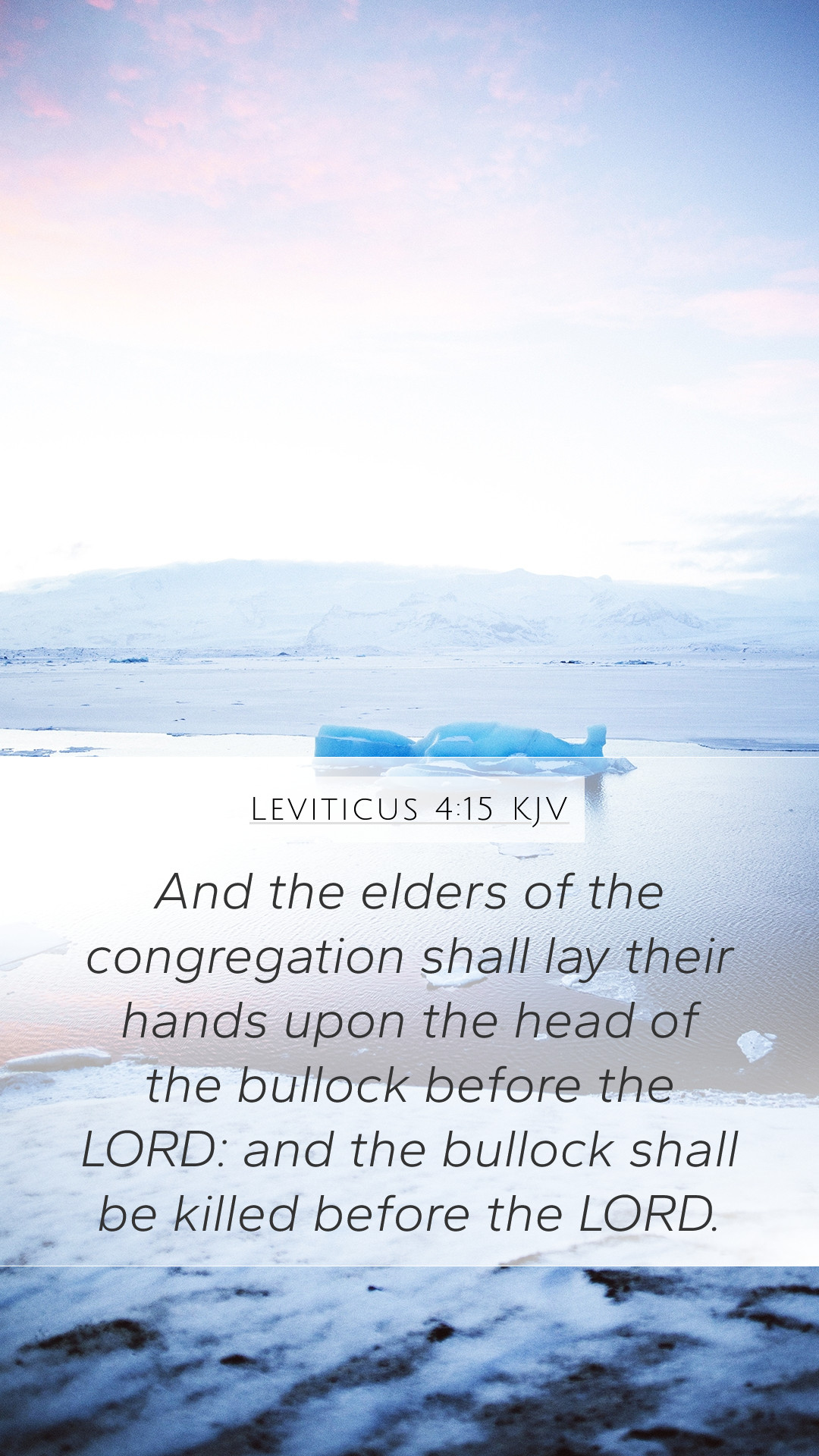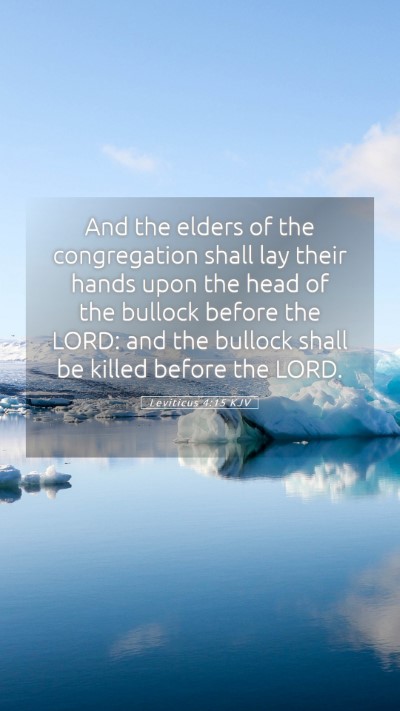Understanding Leviticus 4:15
Bible Verse: Leviticus 4:15
Leviticus 4:15 states, "And the elders of the congregation shall lay their hands upon the head of the goat before the LORD; and the goat shall be killed in the place where the burnt offering is killed, before the LORD: it is a sin offering." This verse is part of the instructions regarding sin offerings and highlights the two significant components: the elders' role and the sacrificial lamb's purpose.
Bible Verse Meanings and Interpretations
This verse serves to illustrate the gravity of sin within the community and the necessity for collective responsibility. According to Matthew Henry's Commentary, this act of laying hands signifies a transfer of guilt and a solemn acknowledgment of sin, not merely by the individual but by the community members represented by the elders. The goat symbolizes the taking away of sin as it carries the transgressions of the people, echoing the themes of atonement and reconciliation found throughout Scripture.
Albert Barnes adds that the elders' involvement signifies a leadership role in seeking forgiveness and maintaining communal faithfulness, showing that sin affects not just the individual but the entire congregation. This lays a foundation for understanding sin within a community context, urging all believers to remain vigilant against transgression.
Details on the Sin Offering
- The sin offering was a vital aspect of the Israelite sacrificial system, emphasizing atonement and reconciliation with God.
- Adam Clarke notes that such offerings were meant to restore God's favor and signify repentance among the people.
- This ritual reflects the seriousness of sin and the necessity for proper procedure to achieve forgiveness.
Significance of the Goat
The goat in this context represents more than a mere animal; it symbolizes the burden of sin carried away from the people. This connection is important for understanding the overall theme of sacrifice and atonement present in both Levitical law and the New Testament. The act of the elders laying their hands on the goat signifies a tangible acknowledgment of sin and a hopeful transfer of guilt.
Comparative Analysis
In relation to other biblical texts, this practice mirrors the transfer of sin found in Isaiah 53:6, where the "Lord has laid on Him the iniquity of us all," and points towards the ultimate sacrifice of Jesus Christ as outlined in the New Testament.
Application of Leviticus 4:15 in Daily Life
Understanding this passage allows contemporary believers to reflect on their own lives regarding sin's impact. It serves as a reminder that communal responsibility and personal confession are vital in maintaining spiritual health within the church.
Bible Study Insights
- This particular verse can guide Bible study groups in exploring themes of community, sin, and repentance.
- It provides rich content for online Bible study sessions focusing on Old Testament sacrificial practices.
- Consider using this verse in Bible study lessons that examine how sin affects not just individuals but communities.
Cross References
- Leviticus 16:10 - On the Day of Atonement, another goat represents a scapegoat carrying the sins away.
- Hebrews 9:22 - Underlining that without the shedding of blood, there is no forgiveness.
- Isaiah 53:5 - The prophecy of Jesus' suffering for our transgressions and iniquities.
Conclusion
Studying Leviticus 4:15 encapsulates a significant element of biblical teaching on sin and atonement. By understanding this verse through different commentaries, readers can grasp the depth of the need for atonement and how these Old Testament practices foreshadow the ultimate sacrifice made through Christ.


